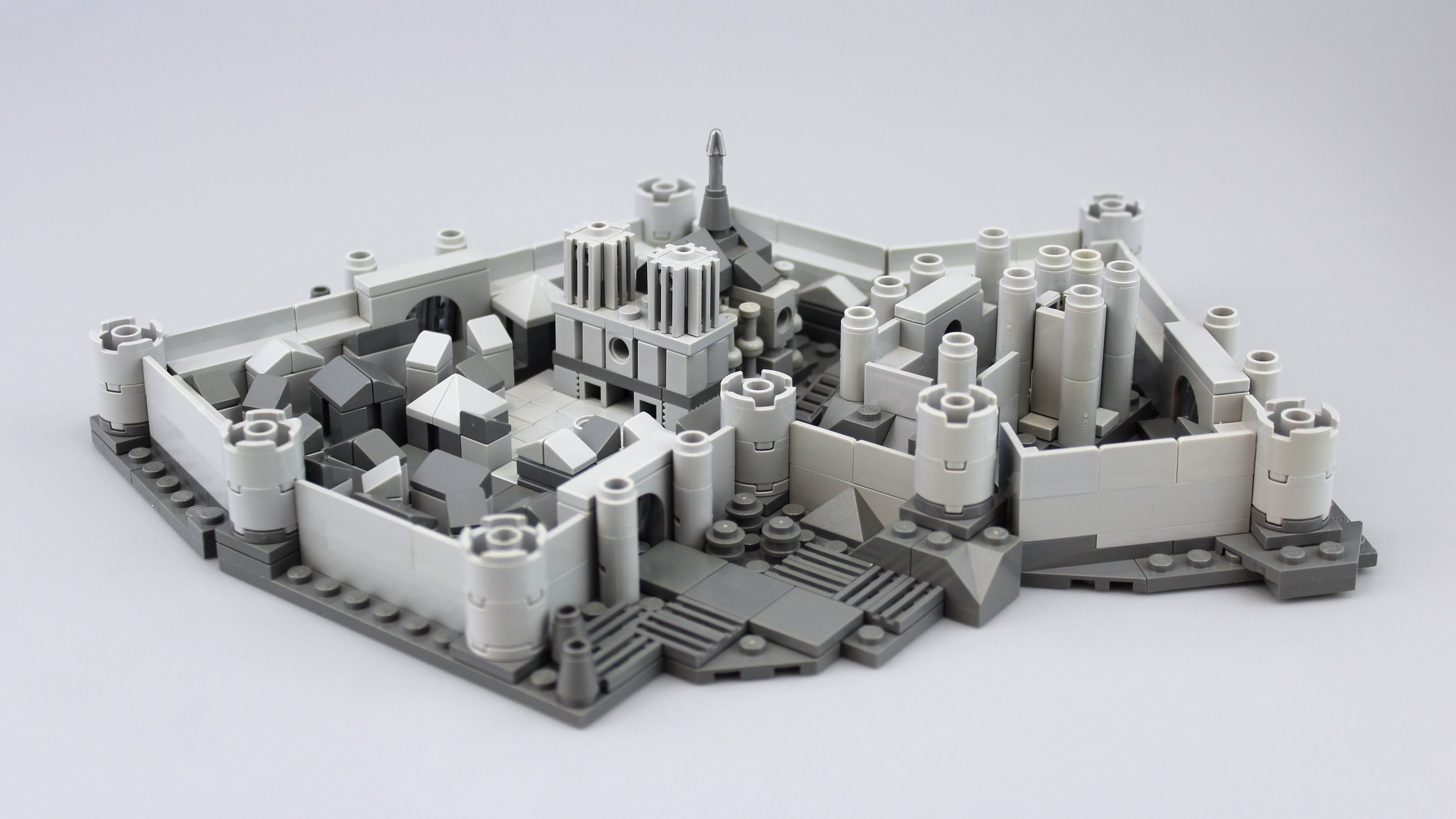Ancient Roman Minifigures
From left to right, these are our characters:
Titus, a lowly legionary. As skilled in construction as he is in battle, Titus has received the same standardized training as all soldiers of his class. He’s a good shot with a pila, too.
LEGO has produced a Roman legionary minifigure before, and my character uses its signature helmet. Below the neck, though, I sought to differentiate my legionary from the LEGO one. I’ve given Titus a different torso and legs, broad shoulder armor—which, I think, does well to capture the shape of a legionary’s segmented pauldrons—a gladius sword to wear at his belt, and a more accurate pila, a special kind of javelin employed by the Roman army. I would have preferred to use the LEGO legionary’s printed shield, but just didn’t have one on hand.
———
Scipio, an officious officer. Leader of an entire legion, Scipio revels in his stature. He dreams of one day “pulling a Caesar” and leading a coup, but keeps these dreams very much to himself.
I also didn’t want to hew too close to the LEGO-released Roman Centurion figure, but there were some parts here I couldn’t resist reusing, like the crest, the breastplate, and the cape. Using a helmet by BrickWarriors helped to ease the similarities enough for me. I’m pleased with the posing on this figure, especially since it shows off those terrific white short-sleeved arms. I wish I had 10 more pairs of those…
———
Felix, a proud standard bearer. The signum he carries holds symbolic value for his legion; being entrusted with it is a great honor, and one that Felix never tires of talking about.
Aside from his arms, legs and shoulder covering, Felix’s design is essentially the same as Titus’s. By the way, I opted for that fabric shoulder covering as a way to mask the detached arm socket. The main difference between my Roman soldiers is, of course, the signum. While I played around with making this banner even larger, topping it with some kind of golden animal or a pair of wings, the more understated design I’ve gone for felt more historically appropriate and realistic (any bigger, and Felix would have had too much trouble carrying it!).
———
Clodius, a lazy emperor. Clodius’ favorite place to be is on a lounge couch, being fed grapes. He couldn’t be happier to be in his position.
I’m reusing the toga design I premiered in my Greek figures series here for Clodius. In fact, I originally had the intention of using this purple toga for the Greek collection, but as soon as I thought to include an emperor in the Roman one, I knew I’d need to save that color. It was a pretty late-in-the-game development for me to build Clodius a lounge couch; originally, I had posed him standing giving a Coliseum-style “thumbs down.” That didn’t read visually (minifigures not having thumbs, and all…), so I settled on this pose instead. To me, there’s nothing that better telegraphs the excess and languor of an imperial ruler than laying on a couch with a bowl of delicious grapes!
———
Hadrian, an enslaved retiarius. Captured during a campaign in North Africa, the gladiator now known as Hadrian was an unsuccessful rebel against the region’s Roman governor. Every time he sets foot in the arena, he fights for his life.
I think the retiarius is one of the most interesting varieties of gladiator. It seems like the fighting style of the retiarius requires speed, strategy, and agility, not necessarily skills demanded of the more heavily armored types. Because of their distinctive silhouette, one that I associate at once with ancient Rome, my mind immediately went to building a retiarius when I decided to tackle this civilization in figbarf form.
———
Maximus, an undefeated murmillo. Maximus is extremely popular in the Coliseum; his famous showmanship in battle gives the people of Rome a real “circus.”
Of the myriad types of gladiator, I don’t think any are as iconic as the murmillo. That helmet is an instantly recognizable symbol. Fun fact: the loincloth Maximus wears is a custom-cut piece I originally modified for my Sacrilege Against Quetzalcoatl scene. Although the scant armoring I’ve presented this gladiator with is historically accurate, his shield isn’t quite right. Here comes the gladiator trivia: a murmillo traditionally held a large rectangular shield, not a small round one like mine carries. Why did I go against history? I aesthetically preferred the color, shape, and size of this buckler, simple as that.


